Best indoor trees – designer-approved picks to bring this trend into your home
These are the best indoor trees, according to designers, to bring the outdoors in and elevate your interiors
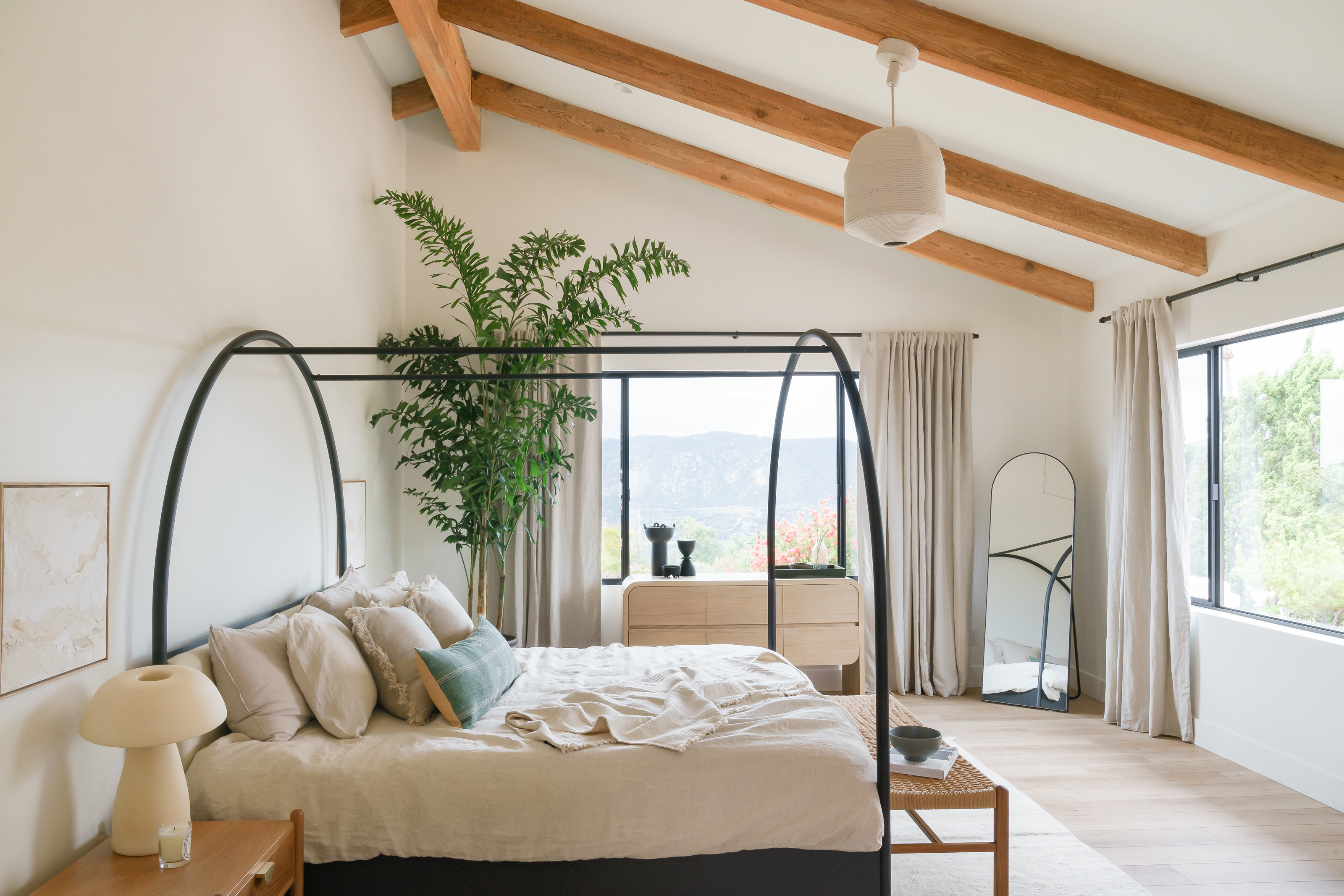

You might have noticed the trend for including indoor trees in interiors – after all, they're hard to miss. The best indoor trees are statement pieces that add gravitas and a boldness to your design scheme. The simple placement of a tree can work in the corner of a room, add height by reaching up to the ceiling, with leaves that stretch and sprawl into the space, and are a nice touch of the outdoors to your interiors.
Trees work throughout the entirety of the home too. Go for a spiraling tree in the stairwell of an entranceway, or a parlor palm that will soak up the moisture and humidity of a bright bathroom - there really is a tree for every room.
However, trees are a serious way to introduce greenery into your home, and that comes with expense. Plus, if you don't know how to look after it, or whether it's a tree that particularly suits indoors, you might find they're not the best houseplants for beginners to try. If it perishes, you'll have a major eyesore and a big dent in your wallet on your hands.
Read on for our interior designer-approved picks that add structure and grandeur to any room in the house.
8 of the best indoor trees for your home
'I love an indoor tree,' says the editor of Livingetc Pip Rich. 'From the bold leaves of a fiddle fig tree to whimsical palms that remind me of holiday, a tree is a simple but stylish addition to your interiors that can bring a sculptural element to any room of the home.'
Whether you're looking to bring some height to your living room scheme or add some drama to your kitchen, these are our favorite indoor tree ideas that should be replicated at home.
1. Money tree

The pachira aquatica is a type of money plant tree with a beautiful plaited bark that bursts into a vibrant green display of leaves. Interestingly, the tree thrives under fluorescent lighting, so makes a nice home office idea, and is relatively low maintenance, liking humidity and bright, indirect light. When it comes to how often you water this houseplant, it needs misting and a good watering every week or so.
As the tree grows, you can encourage the wonderful twists in the bark. The plant must be healthy so get it into a good state. Braid the stalks when they are green or less than 1/2 inch in diameter. Begin by sicking two stakes on either side of the tree; each stake should reach as high as the leafy part of the money tree. Gently start the braid from the base of the plant by crossing one branch over the another. Keep the braid slightly loose, leaving enough distance between each crossing of branches so that the bark tree does not snap. Work your way up but don't use brute force. Tie a string around the end of the braid loosely and this will keep it in place as the tree grows.
In this scheme, designer Laura Gonzalez has used one of these elegant trees for the final touch to her French countryside home in Mainneville.
2. Fiddle leaf fig tree
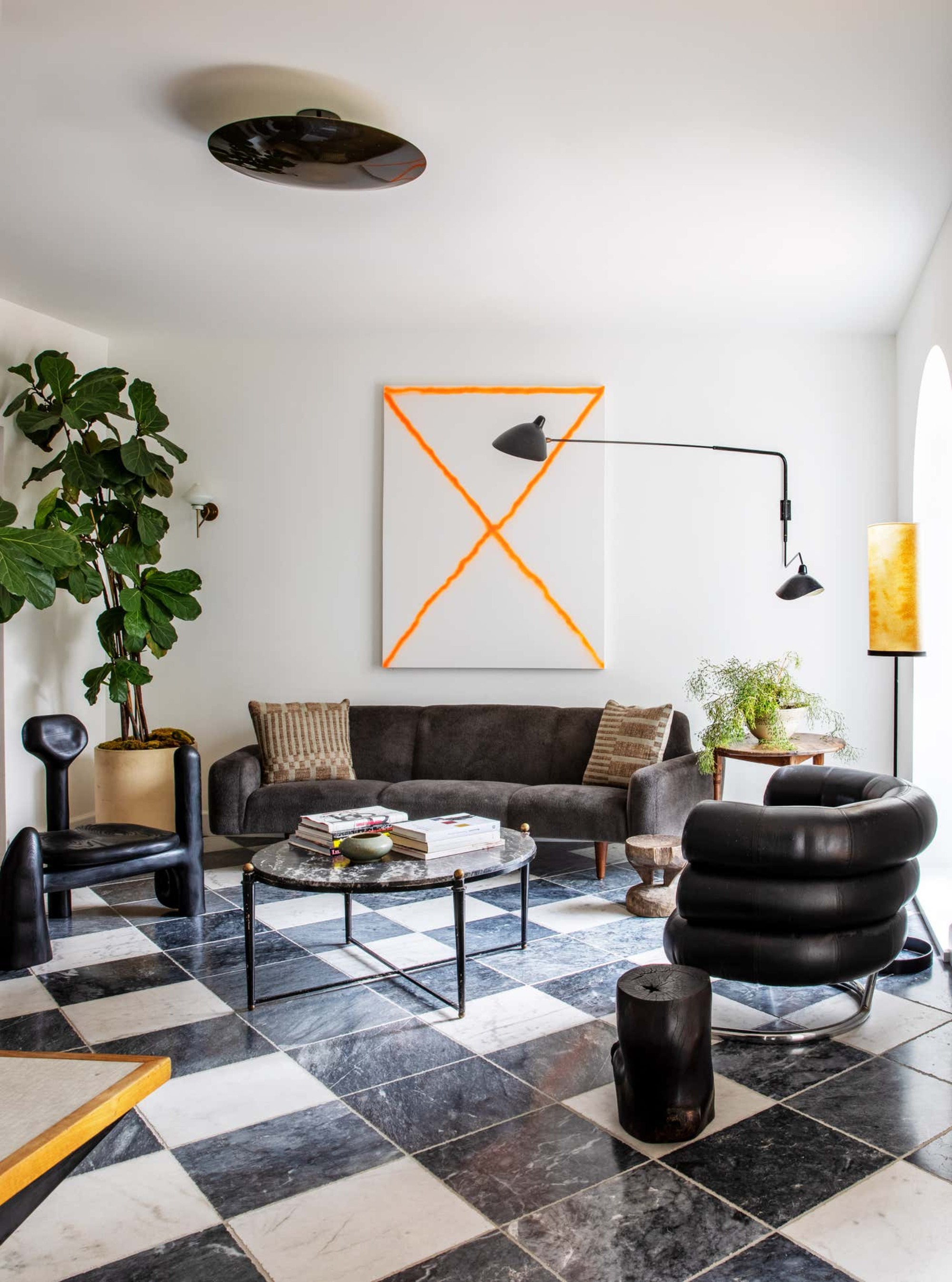
A classic go-to indoor tree is the fiddle leaf fig tree. Hailing originally from the jungle, the tree is known for its large, heavily-veined leaves that somewhat resemble the body of a violin. They grow to great heights and bring a sculptural element to your interiors, drawing the eye and making a great statement with their mere presence in the corner of the room.
'It adds an architectural addition to a living space,' says Thomas Broom-Hughes, director of Horticulture at Petersham Nurseries. 'A bright bathroom would be an ideal indoor location, or a living room would also work if you can give it enough humidity.'
To look after your fiddle leaf, protect the tree from drafts and give it enough bright filtered light. Keep the soil moist, but not wet (a self-watering pot can make caring for this tree a lot easier). Keep the leaves healthy by giving them a dust - as broad surfaces they can accumulate quite a bit of dust.
Designer Matt Blacke has used a statement fiddle leaf in this room to add interest to the otherwise sparse walls, and bring height to the scheme.
3. Olive tree

An olive tree makes a beautiful indoor plant, particularly in the kitchen. In this example by Sola Kitchens, the olive tree is cleverly built into the worktop, and makes for a real statement. The chopping boards set against the backsplash also are a nice reference to the wood and bark of the tree.
'Olive trees are exotic and of course they produce olives and olive oil so are closely connected to cooking and kitchens hence it is a really lovely type of tree to have in the kitchen,' explains CEO of Sola Kitchens, Sofia Bune Strandh.
'With this kitchen, the intention was to have a live tree and we had planned space inside the island for a large pot and also access for watering, We also chose a Corian worktop which can be adjusted when the tree grows.'
Olive trees are relatively easy to look after, but like to feel like they're in a Mediterranean climate, so warm and well-lit if possible, and lots of water to help them bear fruit and not get too dry.
4. Black olive tree
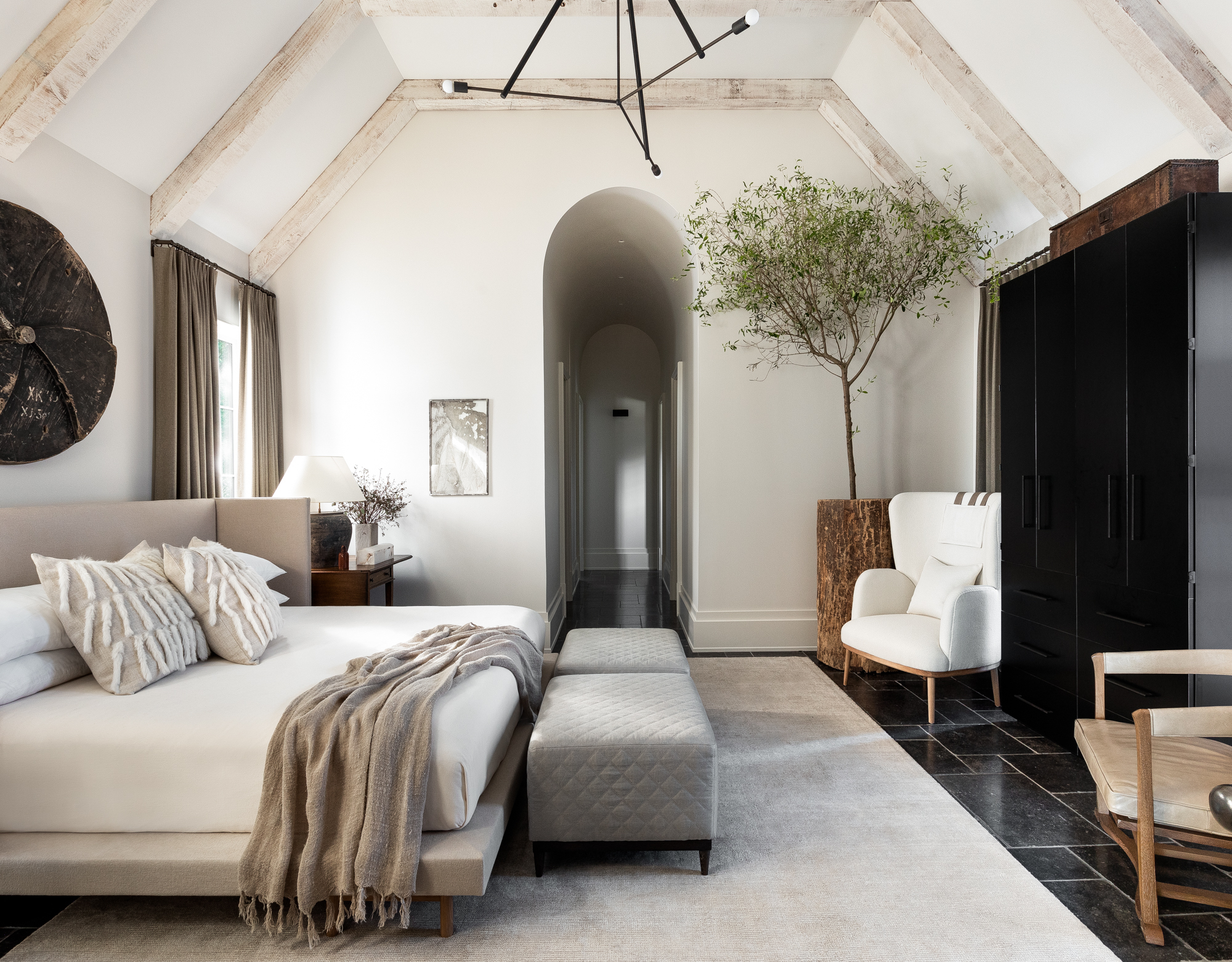
The black olive tree, also known as Bucida buceras, isn't actually an olive tree at all, but that doesn't stop it from being an indoor favorite of designers like Brigette Romanek. They're beautifully sculptural trees, almost like supersized Bonsai trees
''They are a beautiful and excellent choice for those seeking a tall and elegant plant with lovely green foliage and branches that form their own particular journey,' explains plant expert Ryan Hroziencik from The Tropics Inc. 'No two are alike.'
Sometimes known as the Shady Lady, it's worth noting that the black olive tree needs a large amount of sun and warmth to keep healthy and looking its best, so it might not be the best choice for smaller homes or when decorating an apartment.
5. Fishtail palm

If you're working with a pitched roof, a tree can be a brilliant way to introduce an element that fills the space, avoiding the ceiling feeling too high and un-cozy. That was why San Diego-based designer Abbie Naber of a Naber Design chose this sculptural fishtail palm for this modern bedroom.
'It was selected for its height,' Abbie tells us. 'This room had high ceilings and I desperately needed to fill that corner with a statement.' Fishtail palms can grow incredibly tall, but given they need bright light and humidity to really thrive, you'll find that their manageable as an indoor plant.
Ensure it's in a sunny spot, and give it a little help on the humidity front when the air is particularly dry. It may also benefit from a little fertilizer now and again to help fight any deficiencies.
6. Round fan palm
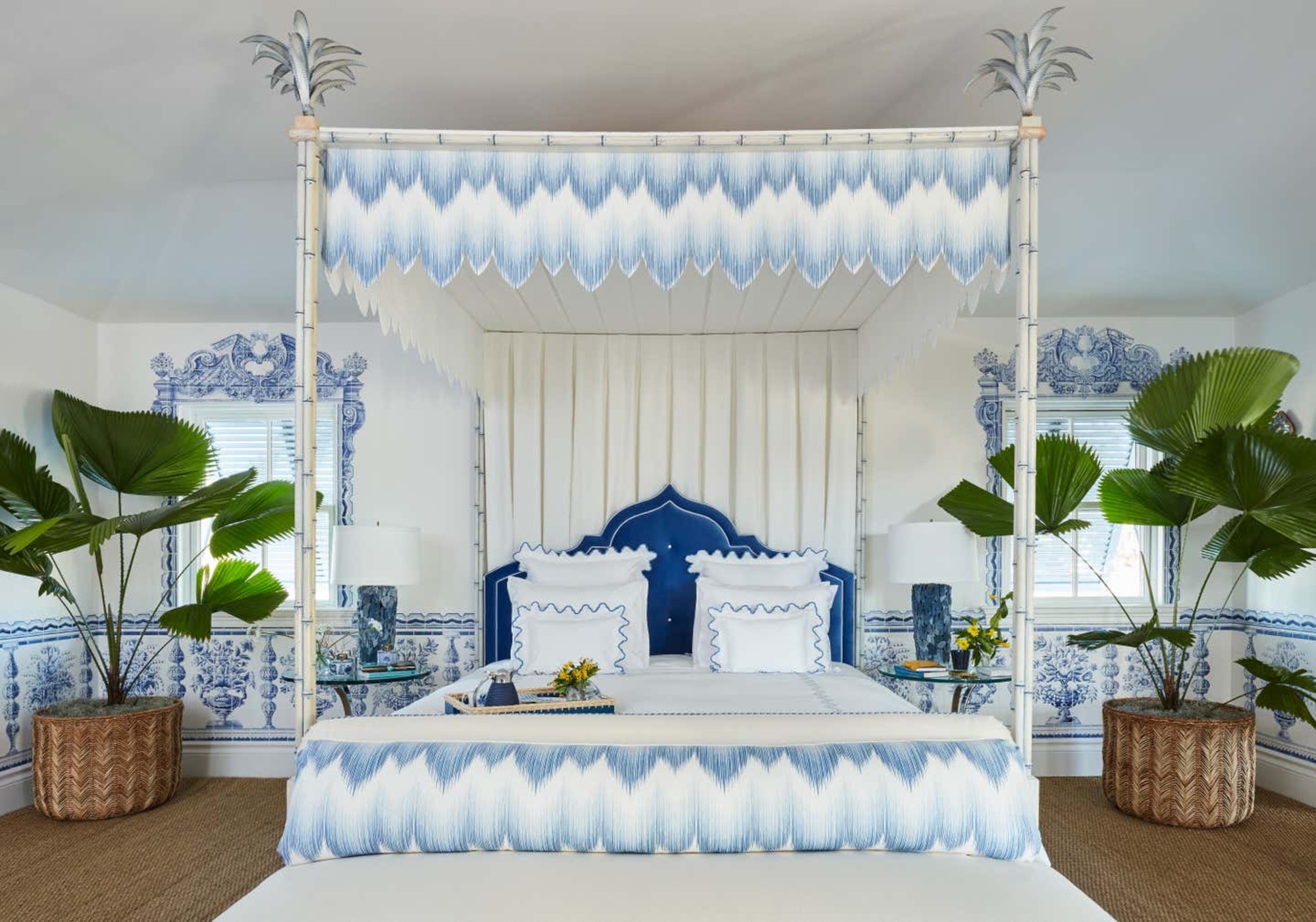
A round fan palm makes for a beautiful addition to your home, with big, circular palm leaves that are slightly unusual, tropical looking and reminiscent of far-flung lands. The palm can grow to around 6-10' when cared for properly, so treat it with love - giving it partial shade and keeping it warm in a minimum of 32°F to make sure it thrives in your home.
In this design by Branca, the all-blue scheme is broken up with these great palms showing off their bold and verdant green coloring.
7. Dwarf Umbrella tree
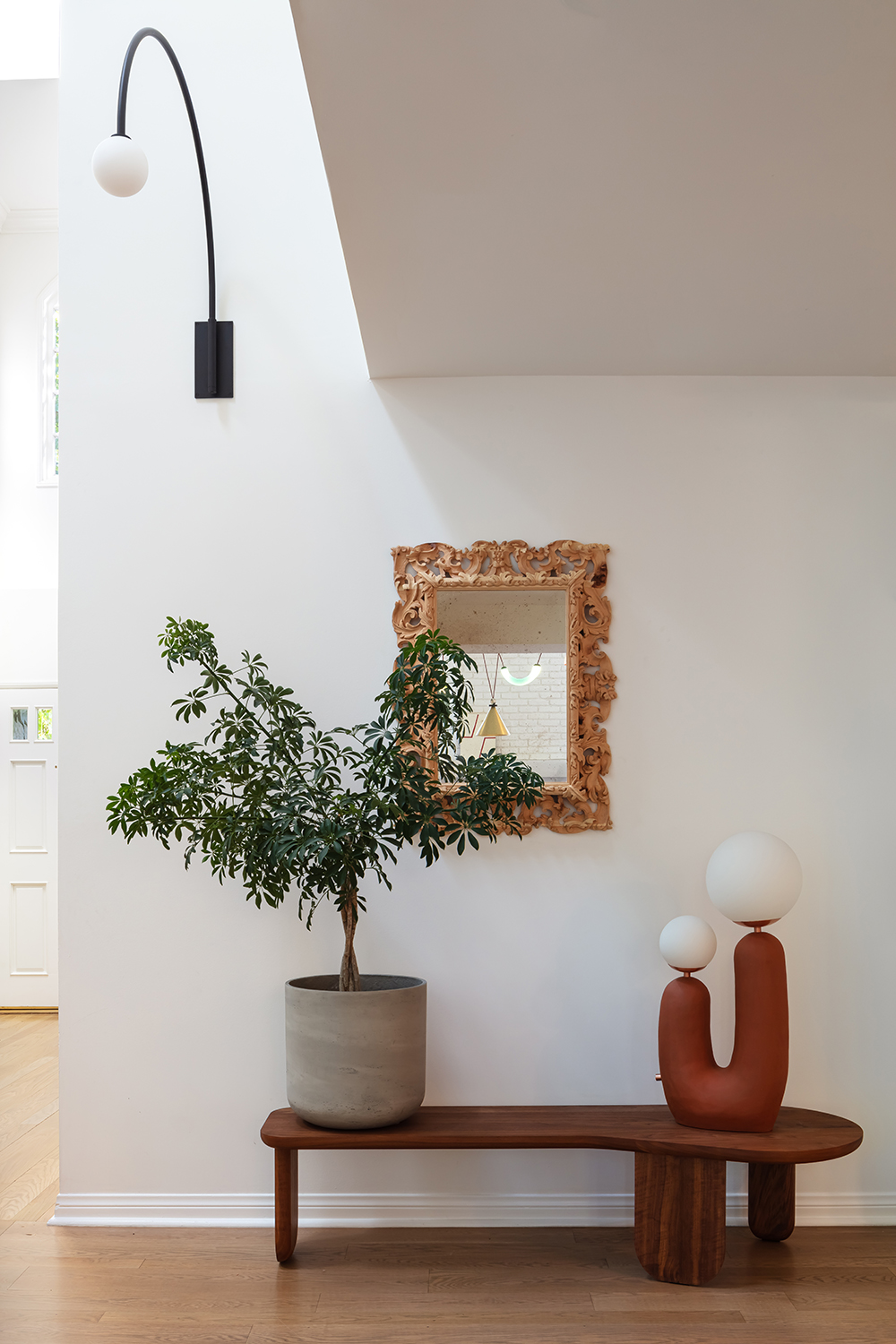
As well as the way the shape of the leaves contributes to the space, consider the trunk, too. Choosing a dwarf umbrella tree for the hallway of this Hollywood home, the designers from LaLa Reimagined ha one thing on their mind. ''We were drawn to the braided trunk,' explains co-founder Azar Fattahi.
Umbrella trees are a relatively easy-going choice, so they're a great tree choice if you're worried about keeping your houseplants looking their best. They prefer bright, but indirect light and thrive relatively well in all humidity levels, though if it's too dry, they can be prone to pests. You'll only need to water it every week or two, or just when the soil feels dry.
8. Banana tree
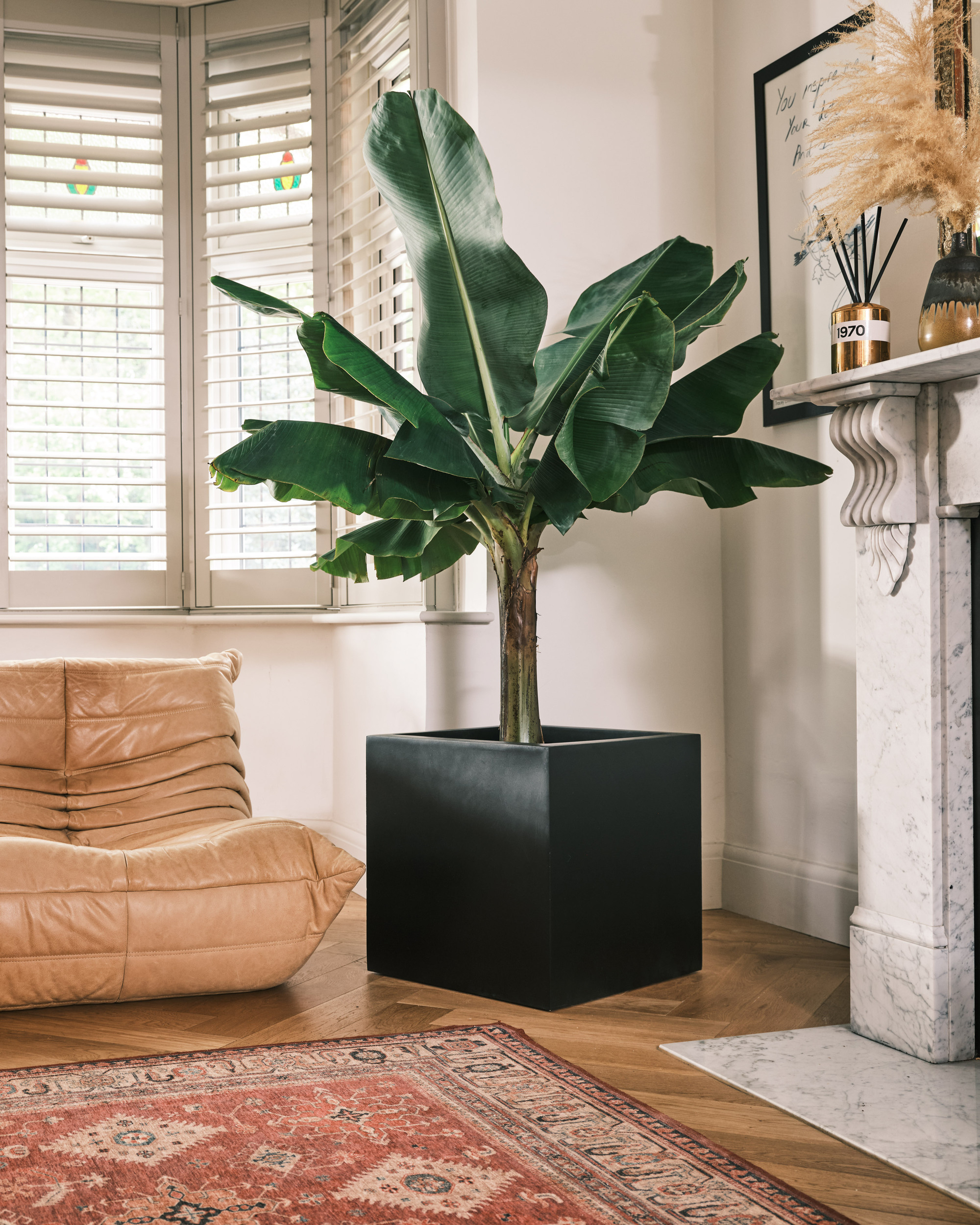
With attention-grabbing leaves, the banana tree can make a splash of architectural greenery to your interiors. The dwarf banana tree is a slightly smaller version, that may suit any height restrictions of your home and is relatively simple to look after, making it one of our favorite indoor trees to grow.
The banana tree has height and big leaves, so it does need substantial watering. These plants also like hot and humid conditions. Indoor bananas need warm temperatures; night temperatures around 67°F are ideal and day temperatures in the 80s.
8. Parlor palm
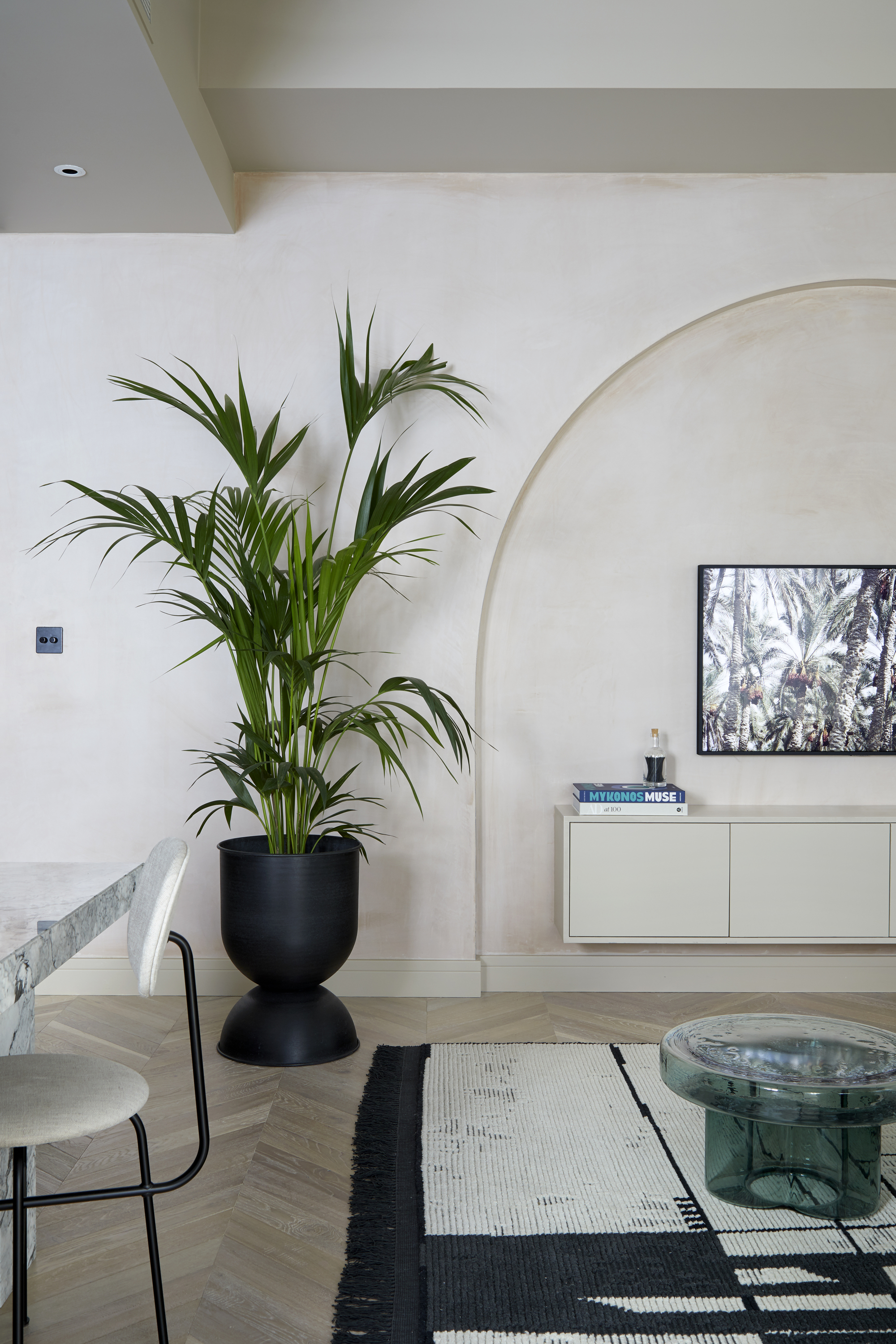
A parlor palm is a popular indoor tree that can reach heights of up to 30 inches and impresses with its splayed, sharp leaves. In the wild, you'll find a parlor plant in central American countries, but it's been favored as an indoor plant for generations.
It's the perfect combination plant that requires little maintenance yet yields great results. 'A great specimen to have as it adapts well to relatively low-light conditions, remains at a reasonable size and adds a tropical vibe to a space with its lush green fronds on multiple stems,' says Thomas. When it comes to parlor plant care, they thrive on little attention and do not like too much attention, especially overwatering. These palms do not require limited feeding and only need a weak liquid fertilizer once or twice during the growing season.'
How to choose an indoor tree
When it comes to picking the best indoor tree for a specific room in the home, think first about the space and height you want it to take up. If it's about breaking space up on the wall, a tall and busy palm might be best, or a fiddle leaf, but if it's just about breaking up an unloved corner with a pop of greenery, a smaller rubber plant or corn plant will work.
Think about the conditions of the room. If it is a dry space, you will have to regularly mist your plant to keep up with its needs. Is it a dark corner? If so, it might need moving around to give it its dose of vitamin D. Maybe it belongs better in a bathroom, which is a part of your house which has a natural humidity with moisture in the air. Learn about your plant before you allocate it to a corner of the house, or you might find it doesn't last long.
Be The First To Know
The Livingetc newsletters are your inside source for what’s shaping interiors now - and what’s next. Discover trend forecasts, smart style ideas, and curated shopping inspiration that brings design to life. Subscribe today and stay ahead of the curve.

Former content editor at Livingetc.com, Oonagh is an expert at spotting the interior trends that are making waves in the design world. She has written a mix of everything from home tours to news, long-form features to design idea pieces, as well as having frequently been featured in the monthly print magazine. She is the go-to for design advice in the home. Previously, she worked on a London property title, producing long-read interiors features, style pages and conducting interviews with a range of famous faces from the UK interiors scene, from Kit Kemp to Robert Kime. In doing so, she has developed a keen interest in London's historical architecture and the city's distinct tastemakers paving the way in the world of interiors.
-
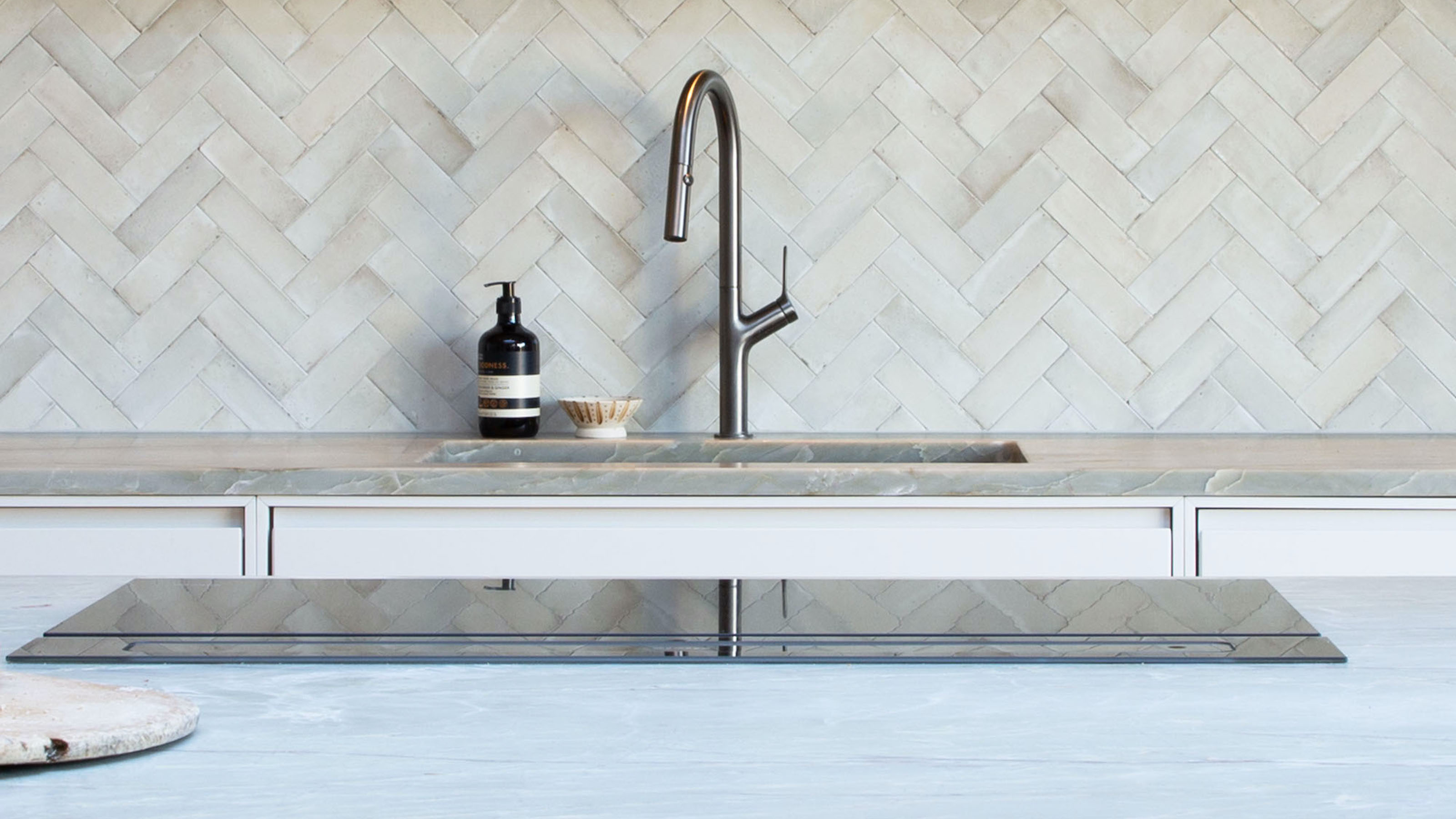 7 Kitchen Tap Mistakes You’re Making That Can Make Your Space Look Outdated – And What to Do Instead
7 Kitchen Tap Mistakes You’re Making That Can Make Your Space Look Outdated – And What to Do InsteadCould it be that your choice of kitchen tap is causing your kitchen to look old-fashioned? Here's what the experts say
By Linda Clayton
-
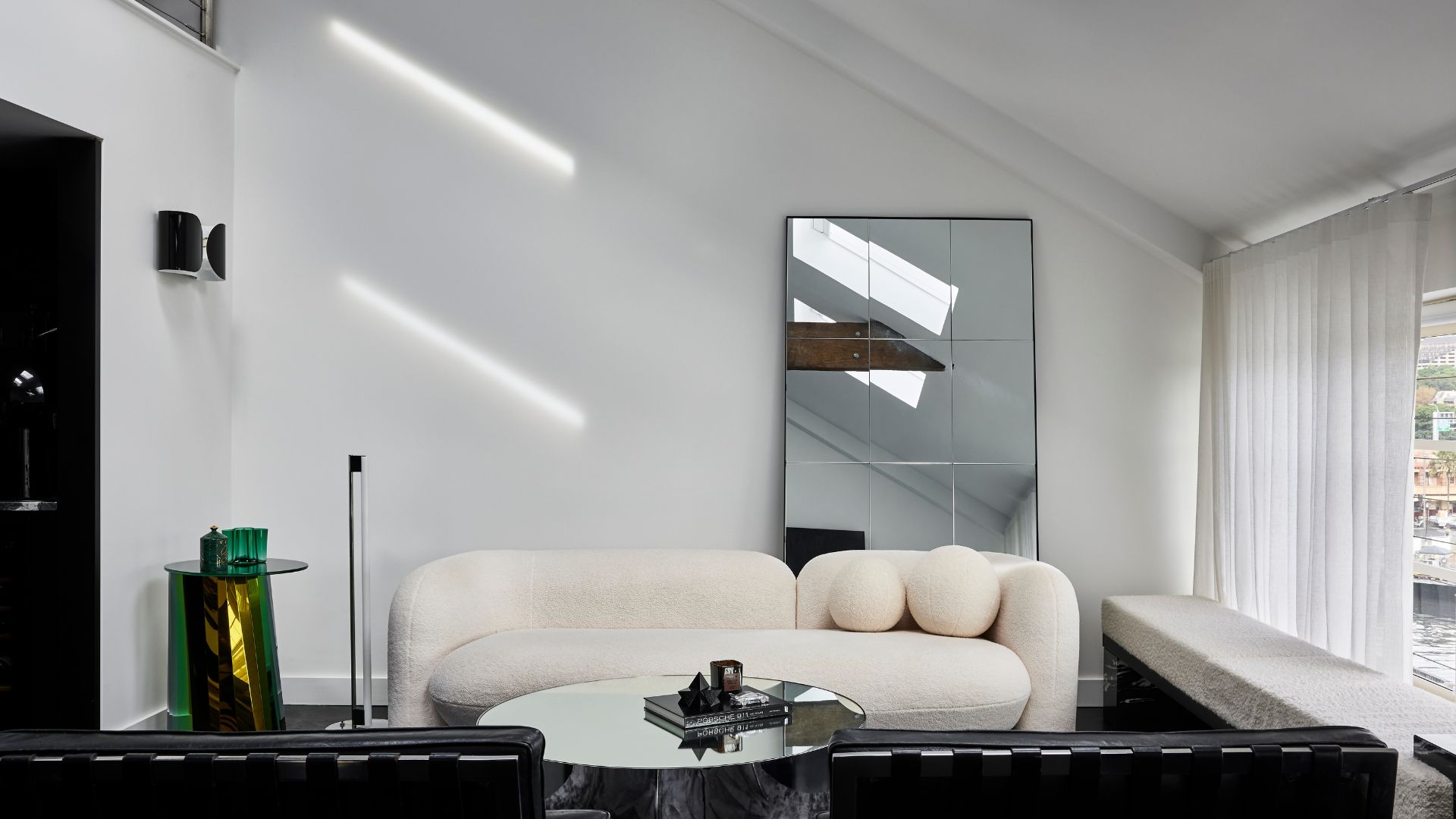 Is it Okay to Have a Mirror Facing a Door in Feng Shui? The Verdict is Out and It Just Might Surprise You
Is it Okay to Have a Mirror Facing a Door in Feng Shui? The Verdict is Out and It Just Might Surprise YouDecorating your home with mirrors calls for intention if you're dressing your space in accordance with Feng Shui. Here's what you should know.
By Amiya Baratan
-
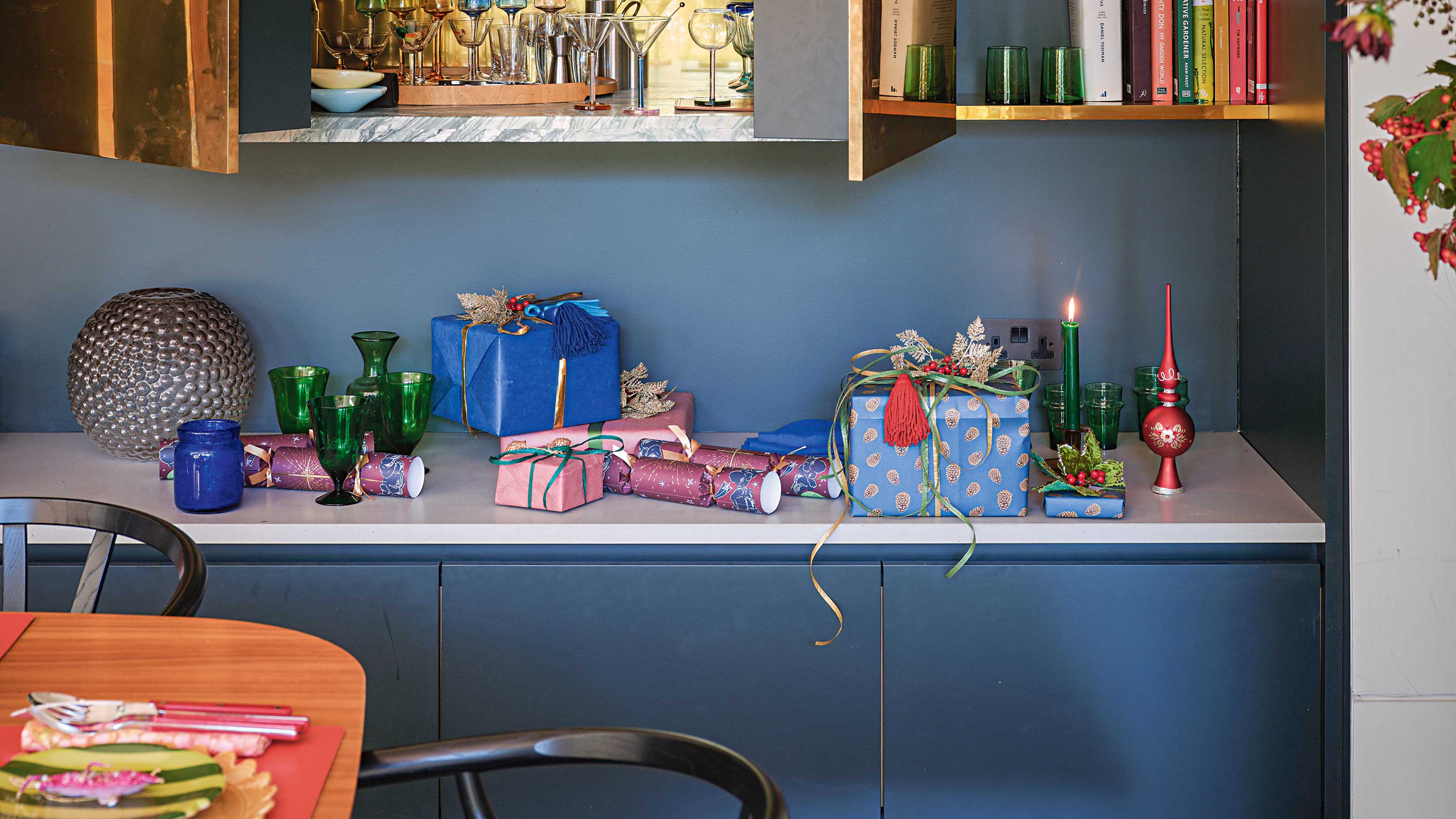 How to declutter as-you-go on Christmas Day to stop your home spiralling into chaos
How to declutter as-you-go on Christmas Day to stop your home spiralling into chaosChristmas can be one of the messiest days for your home, but it doesn't have to be. Follow these simple steps to restore peace to your home this Christmas
By Alex Berry
-
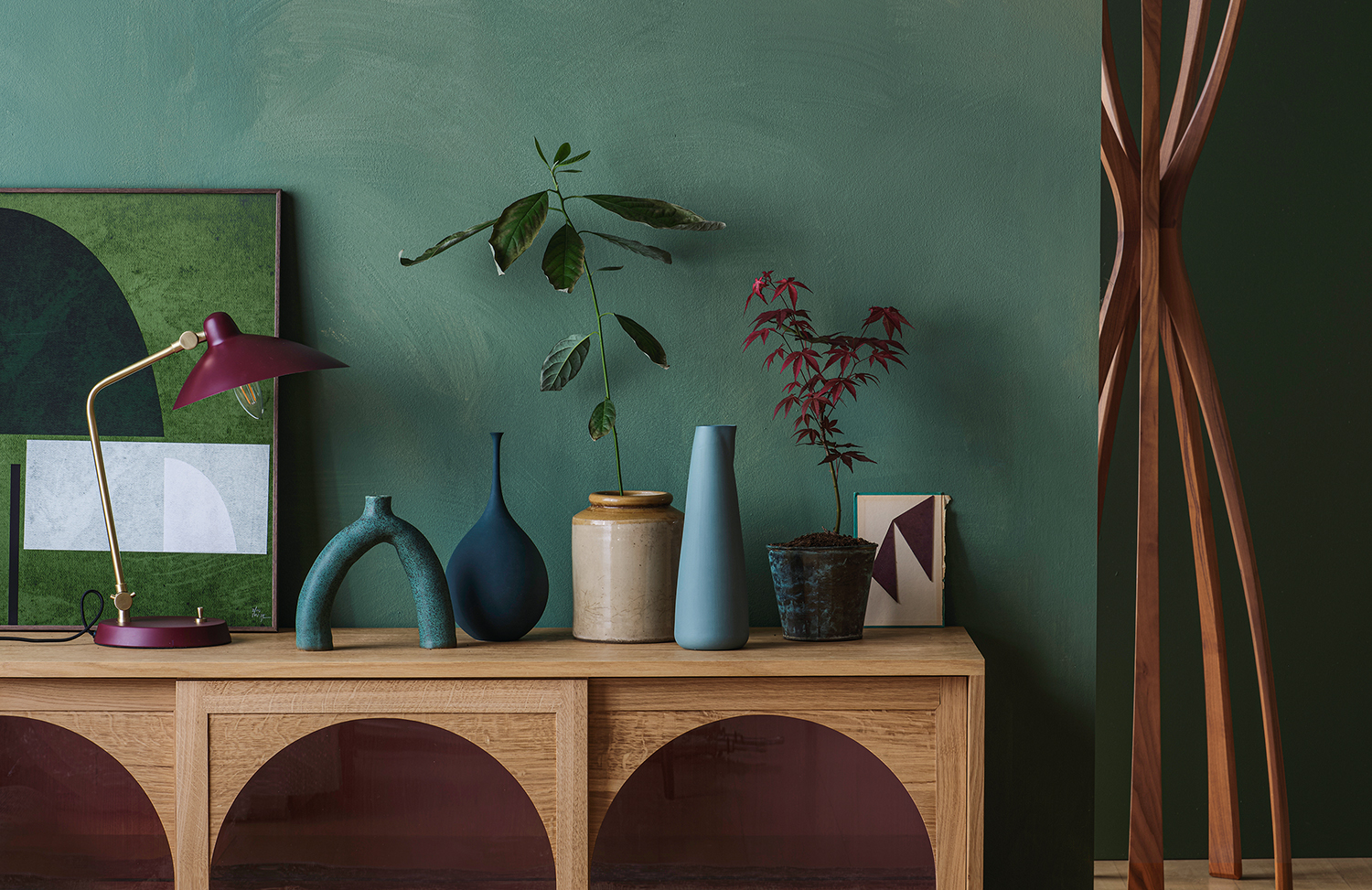 What colors make a room feel bigger and brighter? Designers share their tips for space-enhancing schemes
What colors make a room feel bigger and brighter? Designers share their tips for space-enhancing schemesThese are the colors to choose for small and dark spaces – plus tips on how to use them for the best effect
By Ellen Finch
-
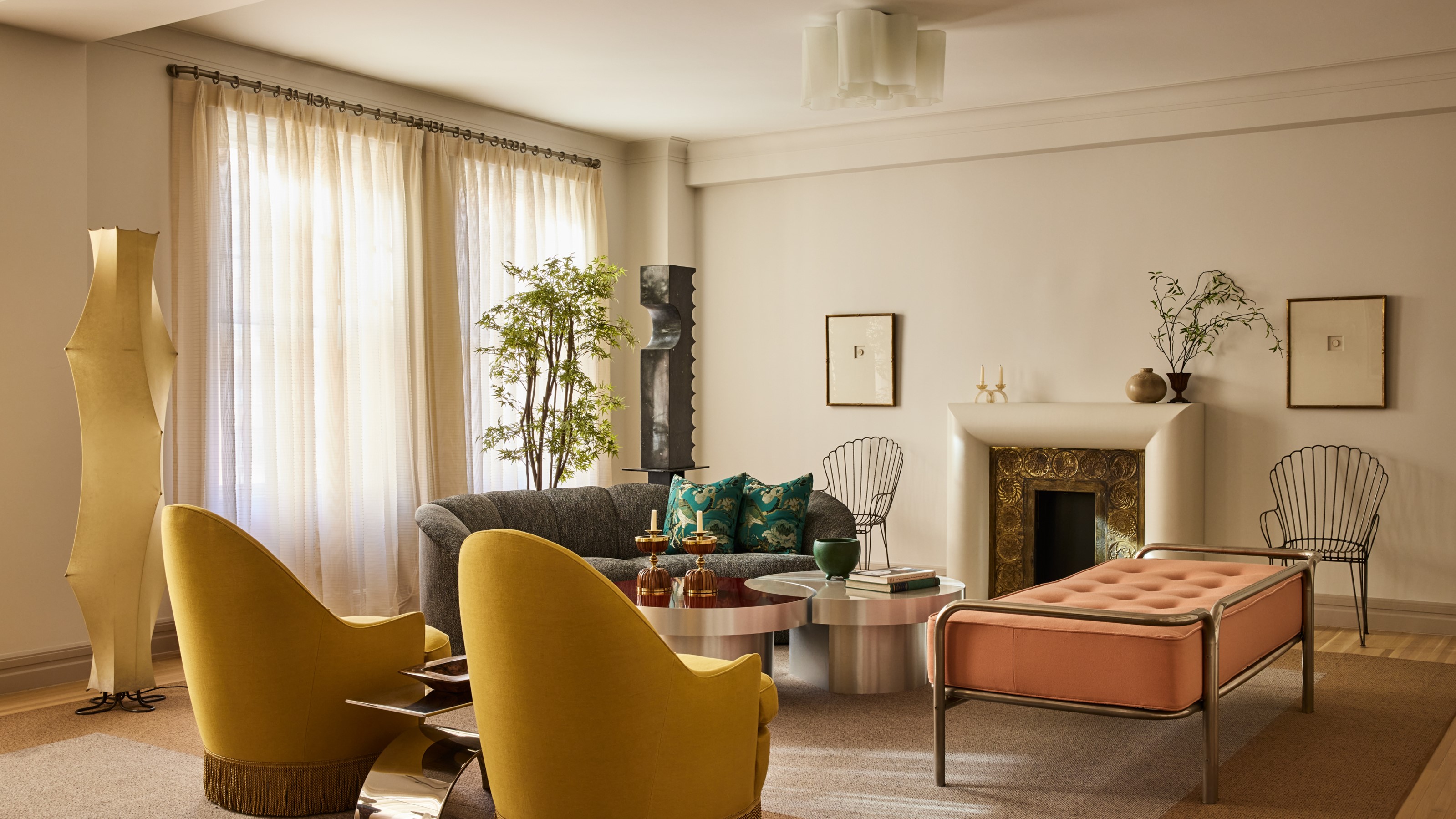 How do I make my living room look expensive? Ideas for achieving a luxe scheme without spending a fortune
How do I make my living room look expensive? Ideas for achieving a luxe scheme without spending a fortuneIf you want your living room to look expensive, these are the key elements that can transform your space, plus how to achieve them even if you're on a budget
By Oonagh Turner
-
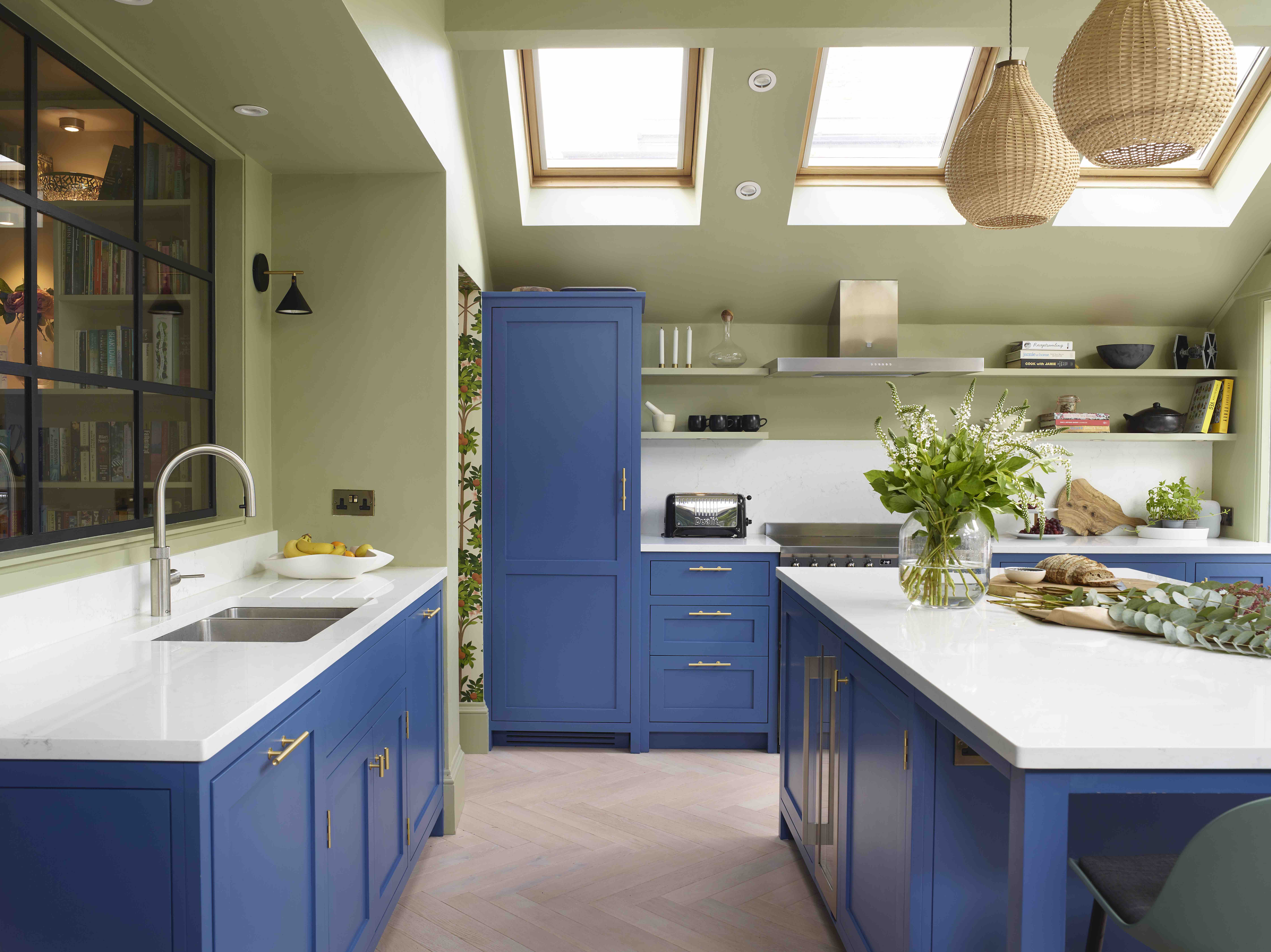 How to choose kitchen cabinet colors – tricks from the experts for picking the right shade
How to choose kitchen cabinet colors – tricks from the experts for picking the right shadeDiscover how to choose a kitchen cabinet color with confidence with these expert-recommended ideas
By Aditi Sharma Maheshwari